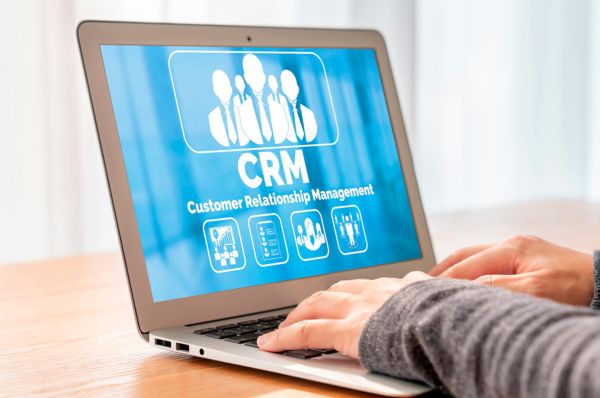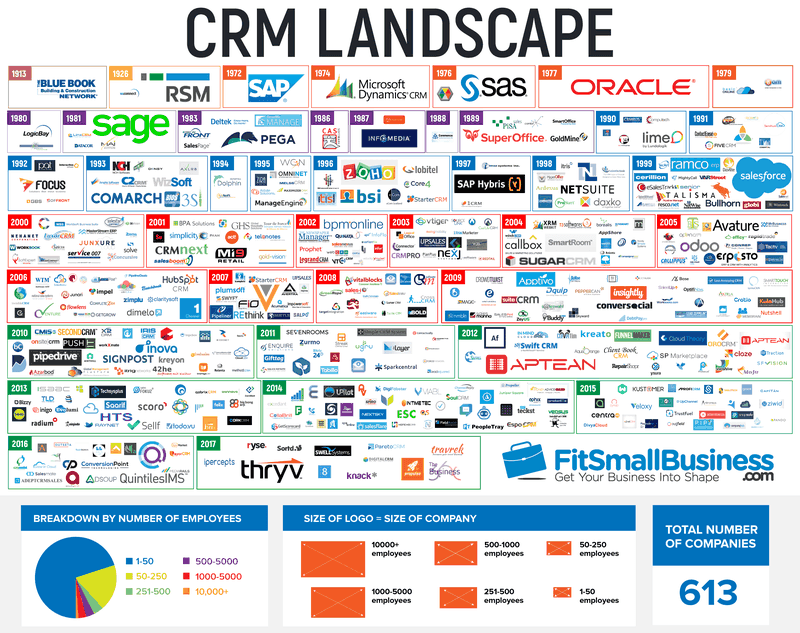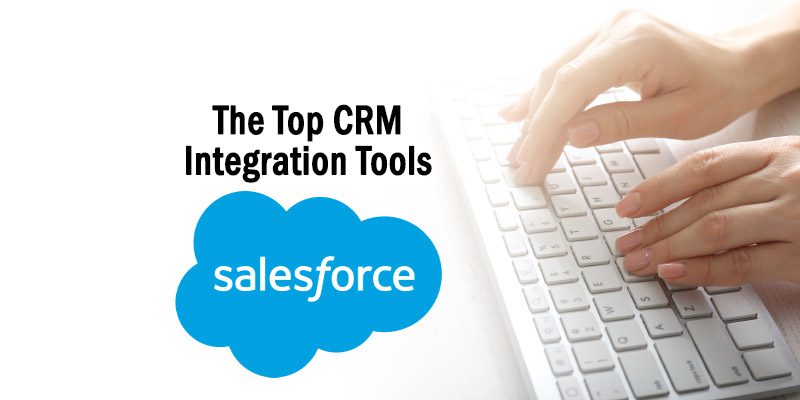
Starting a small business is an exciting journey, filled with opportunities and challenges. One of the most critical aspects of running a successful small business is building and maintaining strong customer relationships. That’s where a Customer Relationship Management (CRM) system comes in. Setting up a CRM for your small business can seem daunting, but it’s a worthwhile investment that can significantly improve your sales, marketing, and customer service efforts. This comprehensive guide will walk you through every step of the small business CRM setup process, ensuring you’re equipped to choose the right CRM, implement it effectively, and maximize its benefits.
Why Your Small Business Needs a CRM
Before diving into the setup, let’s explore why a CRM is essential for your small business. In the early days, you might manage customer interactions using spreadsheets, email, and sticky notes. However, as your business grows, this approach quickly becomes unsustainable. A CRM provides a centralized hub for all your customer data, enabling you to:
- Organize Customer Data: Store all customer information, including contact details, purchase history, communication logs, and preferences, in one place.
- Improve Customer Relationships: Gain a deeper understanding of your customers, allowing you to personalize interactions and tailor your offerings to their needs.
- Boost Sales: Streamline your sales process, track leads, and identify opportunities to close deals more efficiently.
- Enhance Marketing Efforts: Segment your customer base, target specific groups with personalized campaigns, and measure the effectiveness of your marketing activities.
- Provide Better Customer Service: Offer faster and more efficient support by having instant access to customer information and past interactions.
- Increase Productivity: Automate repetitive tasks, freeing up your team to focus on more strategic initiatives.
- Make Data-Driven Decisions: Gain valuable insights into your customer behavior, sales performance, and marketing effectiveness, allowing you to make informed decisions.
In essence, a CRM empowers you to treat each customer as an individual, fostering loyalty and driving business growth.
Choosing the Right CRM for Your Small Business
Selecting the right CRM is the first and arguably most important step in the setup process. The market is flooded with options, each offering a unique set of features and pricing plans. Here’s a breakdown of key factors to consider when choosing a CRM for your small business:
1. Your Business Needs
Before you even start browsing, define your business needs. What are your primary goals for implementing a CRM? Are you primarily focused on sales, marketing, or customer service? Do you need advanced features like lead scoring, sales automation, or marketing automation? Understanding your needs will help you narrow down your options and focus on CRMs that align with your goals.
2. Features and Functionality
Once you’ve identified your needs, research the features offered by different CRMs. Key features to look for include:
- Contact Management: The ability to store and manage customer contact information.
- Lead Management: Features for tracking leads, nurturing them through the sales funnel, and converting them into customers.
- Sales Automation: Tools to automate sales tasks, such as sending follow-up emails, scheduling appointments, and creating sales reports.
- Marketing Automation: Capabilities for creating and managing marketing campaigns, segmenting your audience, and tracking campaign performance.
- Reporting and Analytics: Tools for generating reports, analyzing data, and gaining insights into your business performance.
- Integration: The ability to integrate with other tools you use, such as email marketing platforms, social media channels, and accounting software.
- Mobile Access: Access to your CRM data on the go, allowing your team to stay connected and productive from anywhere.
3. Ease of Use
A CRM is only effective if your team actually uses it. Choose a CRM that is user-friendly, intuitive, and easy to navigate. Look for a platform with a clean interface, clear instructions, and helpful tutorials. Consider offering a demo to your team before making a decision to ensure they feel comfortable using the software.
4. Scalability
Your business will likely grow, so choose a CRM that can scale with your needs. Consider whether the CRM offers different pricing plans and features based on the number of users, data storage, and advanced functionalities. Ensure the CRM can accommodate your future growth plans.
5. Pricing
CRM pricing varies widely. Some CRMs offer free plans with limited features, while others have paid plans based on the number of users or features. Determine your budget and choose a CRM that offers the features you need at a price that fits your budget. Be aware of any hidden costs, such as training fees or additional charges for support.
6. Reviews and Reputation
Read reviews from other small businesses to get a sense of the CRM’s strengths and weaknesses. Check out the CRM’s reputation by researching online forums, social media, and review websites. This will help you gauge the CRM’s reliability and customer support.
Popular CRM Options for Small Businesses
Here are some of the most popular CRM options for small businesses, along with their key features and pricing:
- HubSpot CRM: Offers a free, powerful CRM with features for contact management, sales, and marketing. Paid plans offer more advanced features.
- Zoho CRM: A comprehensive CRM with a wide range of features for sales, marketing, and customer service. Offers a free plan for up to three users.
- Salesforce Sales Cloud: A leading CRM with advanced features for sales and marketing. Pricing can be higher than other options.
- Pipedrive: A sales-focused CRM designed to help you manage your sales pipeline and close deals.
- Freshsales: A sales CRM with built-in features for phone calls, email, and chat.
Take the time to research and compare different CRM options to find the one that best fits your small business’s unique needs.
Setting Up Your CRM: A Step-by-Step Guide
Once you’ve chosen a CRM, it’s time to set it up. This section provides a step-by-step guide to help you get started:
1. Create Your Account and Configure Basic Settings
Sign up for an account with your chosen CRM provider. During the setup process, you’ll typically be asked to provide basic information about your business, such as your company name, industry, and website. You’ll also need to configure your basic settings, which may include:
- User Accounts: Create user accounts for each member of your team who will be using the CRM.
- Roles and Permissions: Assign roles and permissions to each user to control their access to data and features.
- Currency and Time Zone: Set your currency and time zone.
- Company Logo and Branding: Customize the CRM interface with your company logo and branding.
2. Import Your Data
The next step is to import your existing customer data into the CRM. This typically involves importing data from spreadsheets, email contacts, or other systems you may be using. Most CRMs provide templates or import wizards to guide you through the process. Make sure your data is clean and accurate before importing it to avoid any issues.
Here’s how to prepare your data for import:
- Clean Your Data: Remove any duplicate entries, fix any errors, and ensure your data is consistent.
- Format Your Data: Format your data to match the CRM’s import template.
- Map Your Fields: Map your data fields to the corresponding fields in the CRM.
- Test Your Import: Test your import with a small sample of data to ensure everything works correctly.
3. Customize Your CRM
Every business is unique, so you’ll need to customize your CRM to meet your specific needs. This may involve:
- Adding Custom Fields: Create custom fields to store specific information about your customers or leads that are not included in the standard fields.
- Customizing Your Sales Pipeline: Customize your sales pipeline to match your sales process, including stages, probabilities, and deal values.
- Creating Workflows and Automation: Set up workflows and automation to streamline your sales and marketing processes, such as sending automated emails or assigning tasks.
- Integrating with Other Tools: Integrate your CRM with other tools you use, such as email marketing platforms, social media channels, and accounting software.
4. Train Your Team
Training your team on how to use the CRM is crucial for its success. Provide comprehensive training sessions, including hands-on exercises and real-world examples. Ensure your team understands how to:
- Enter and update customer data.
- Manage leads and opportunities.
- Use the sales pipeline.
- Create and track tasks.
- Generate reports and analyze data.
Create training materials, such as user manuals, video tutorials, and FAQs. Provide ongoing support and encourage questions. The more comfortable your team is with the CRM, the more effectively they will use it.
5. Start Using Your CRM
Once your CRM is set up and your team is trained, it’s time to start using it. Encourage your team to consistently use the CRM for all customer interactions. Make it a central part of your daily workflow. Here are some tips for getting started:
- Enter all new customer data into the CRM.
- Update existing customer data regularly.
- Track all customer interactions in the CRM.
- Use the CRM to manage leads and opportunities.
- Run reports to track your progress.
- Use the CRM to automate tasks.
6. Monitor and Optimize Your CRM
Setting up a CRM is not a one-time task. It’s an ongoing process. Regularly monitor your CRM’s performance and make adjustments as needed. Review your data, reports, and workflows to identify areas for improvement. Consider the following:
- Data Quality: Ensure your data is accurate, complete, and up-to-date.
- User Adoption: Monitor how your team is using the CRM and identify any areas where they need more training or support.
- Workflow Efficiency: Review your workflows and automation to identify any bottlenecks or inefficiencies.
- Reporting and Analytics: Analyze your reports to gain insights into your business performance and identify areas for improvement.
- CRM Updates: Stay up-to-date with the latest CRM features and updates.
By continually monitoring and optimizing your CRM, you can ensure it’s meeting your needs and helping you achieve your business goals.
Best Practices for Small Business CRM Success
To maximize the benefits of your CRM, follow these best practices:
- Choose the Right CRM: Selecting a CRM that aligns with your business needs is the foundation of success.
- Clean and Organize Your Data: Maintain high-quality data to get accurate insights.
- Train Your Team Effectively: Empower your team to use the CRM effectively.
- Integrate Your CRM with Other Tools: Connect your CRM with other systems to streamline your workflow.
- Automate Repetitive Tasks: Automate tasks to save time and improve efficiency.
- Personalize Your Customer Interactions: Tailor your interactions to individual customer preferences.
- Monitor and Analyze Your Data: Regularly review your data to track your progress and identify areas for improvement.
- Provide Excellent Customer Service: Use your CRM to deliver exceptional customer service.
- Get Feedback from Your Team: Gather feedback from your team to identify areas for improvement.
- Stay Up-to-Date with CRM Features: Keep abreast of the latest CRM features and updates.
Common Pitfalls to Avoid
While setting up a CRM can be transformative, it’s essential to be aware of common pitfalls that can hinder your success. Avoiding these mistakes can significantly increase your chances of a smooth and effective CRM implementation:
- Choosing the Wrong CRM: Selecting a CRM that doesn’t align with your business needs.
- Not Defining Your Goals: Failing to clearly define your CRM goals.
- Poor Data Quality: Importing inaccurate or incomplete data.
- Lack of Training: Not providing adequate training for your team.
- Ignoring User Feedback: Not listening to your team’s feedback.
- Not Customizing Your CRM: Failing to customize the CRM to meet your specific needs.
- Lack of Integration: Not integrating your CRM with other tools.
- Not Monitoring and Analyzing Data: Failing to regularly review your data and track your progress.
- Not Providing Ongoing Support: Not providing ongoing support to your team.
- Giving Up Too Soon: Expecting instant results and not giving the CRM time to work.
The Benefits of a Well-Implemented CRM
A well-implemented CRM offers a multitude of benefits that can transform your small business. Here’s a recap of the key advantages:
- Increased Sales: Streamline your sales process, track leads, and close deals more efficiently.
- Improved Customer Relationships: Gain a deeper understanding of your customers and personalize your interactions.
- Enhanced Marketing Efforts: Segment your audience, target specific groups with personalized campaigns, and measure your marketing effectiveness.
- Better Customer Service: Provide faster and more efficient support by having instant access to customer information.
- Increased Productivity: Automate repetitive tasks and free up your team to focus on strategic initiatives.
- Data-Driven Decision Making: Gain valuable insights into your customer behavior, sales performance, and marketing effectiveness.
- Improved Team Collaboration: Centralize customer data and improve communication within your team.
- Reduced Costs: Automate tasks, reduce errors, and improve efficiency, leading to cost savings.
- Increased Revenue: Drive sales, improve customer retention, and increase revenue.
- Scalability: Enable your business to scale and grow.
By embracing a CRM, you’re not just investing in software; you’re investing in the future of your business. A well-implemented CRM is a catalyst for growth, enabling you to build stronger customer relationships, improve efficiency, and drive revenue.
Frequently Asked Questions (FAQ)
Here are answers to some frequently asked questions about small business CRM setup:
- How much does a CRM cost?
CRM costs vary widely. Some CRMs offer free plans, while others have paid plans based on the number of users or features. The cost can range from free to several hundred dollars per month. Consider your budget and the features you need when choosing a CRM.
- How long does it take to set up a CRM?
The setup time depends on the complexity of the CRM and the size of your business. It can take a few hours to several days or weeks. The most time-consuming part is usually importing your data and customizing the CRM.
- Do I need technical expertise to set up a CRM?
Most CRMs are designed to be user-friendly and easy to set up, even for those without technical expertise. However, some CRMs offer more advanced features that may require some technical knowledge. If you’re not comfortable with the setup process, consider hiring a CRM consultant.
- What if I don’t have any existing customer data?
Even if you don’t have existing customer data, you can still benefit from a CRM. You can start by entering customer information as you acquire it. The CRM will help you organize your data and track your interactions with your customers. You can also use the CRM to generate leads and build your customer base.
- Can I integrate my CRM with my website?
Yes, most CRMs can be integrated with your website. This allows you to capture leads, track website activity, and personalize your website content. Integration can also simplify your workflow and automate tasks.
- How important is mobile access to a CRM?
Mobile access to a CRM is very important, especially if your team works remotely or spends a lot of time on the road. Mobile access allows your team to access customer data, manage leads, and track sales on the go. It can significantly improve productivity and customer service.
- How do I choose the best CRM for my business?
The best CRM for your business depends on your unique needs and goals. Consider the factors discussed earlier, such as your business needs, features and functionality, ease of use, scalability, pricing, and reviews. Research different CRM options and compare them to find the one that best fits your business.
- What are the benefits of using a CRM?
The benefits of using a CRM are numerous, including increased sales, improved customer relationships, enhanced marketing efforts, better customer service, increased productivity, and data-driven decision-making. A CRM can help you streamline your processes, improve your efficiency, and grow your business.
- How do I train my team to use a CRM?
Provide comprehensive training sessions, including hands-on exercises and real-world examples. Create training materials, such as user manuals, video tutorials, and FAQs. Encourage questions and provide ongoing support. The more comfortable your team is with the CRM, the more effectively they will use it.
- How do I measure the success of my CRM?
Measure the success of your CRM by tracking key metrics, such as sales growth, customer retention, marketing campaign performance, and customer satisfaction. Regularly review your data and reports to identify areas for improvement and make adjustments as needed.
Conclusion
Setting up a CRM for your small business is a strategic move that can significantly impact your success. By following the steps outlined in this guide, you can choose the right CRM, implement it effectively, and reap the rewards. Remember to focus on your business needs, choose a user-friendly platform, train your team thoroughly, and continuously monitor and optimize your CRM. With the right approach, a CRM will become an invaluable asset, helping you build stronger customer relationships, boost sales, and achieve your business goals. Embrace the power of a CRM, and watch your small business thrive!


